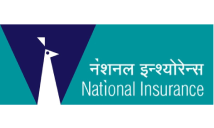
- What are whole life insurance plans?
- Features of whole life insurance plans
- Types of whole life insurance plans
- Benefits of whole life insurance plans
- Who should invest in whole life insurance plans?
- Best whole life insurance policies in India
- Overview of the best whole life insurance plans
- Riders available in whole life insurance plans
What are whole life insurance plans?
Whole life insurance plans are those plans which provide coverage until you reach 99 or 100 years of age. Thus, these plans essentially run for your entire lifespan if you die before reaching 100 or 99 years of age.
Whole life insurance features
Whole life insurance plans which are available in the market have some salient features which are as follows:
- These plans can come in different variants. These variants include the following –
- Pure protection plans, also known as Term Insurance Plans wherein only a death benefit is paid whenever the insured dies before attaining 100 years of age
- Endowment plans wherein coverage runs till 100 years. In case of death, a death benefit is paid if the insured survives till 100 years of age, a maturity benefit is also paid
- Money-back plans wherein regular money back benefits are paid after the completion of the premium paying tenure. The benefits are paid till death or till the insured reaches 100 years of age, whichever is earlier.
- Unit linked plans wherein coverage is allowed for up to 100 years. The death or maturity benefit depends on the market linked returns earned by the invested premium.
- Premiums are usually payable only up to a specified age. Whole life plans are, therefore, limited premium paying plans.
- Endowment and money back whole life plans might be issued as participating or non-participating plans. Participating plans are those which earn bonuses.
- There is no fixed tenure of the plan. The tenure depends on the entry age of the insured. It is calculated by deducting the entry age with 100 or 99 as per the coverage of the plan. So, if you are aged 30 years and the plan allows coverage till 100 years, the policy tenure would be 70 years.
Types of whole life insurance plans
Whole life insurance plans can come in different variants. These variants include the following –
- Whole life term plans – whole life term plans are pure protection plans which have no definite coverage tenure. The plan runs till the insured attains 99 or 100 years of age (depending on the plan’s maximum coverage age). If the insured dies before attaining 99 or 100 years of age, the death benefit is paid. If, however, the insured survives the policy tenure and attains 99 or 100 years of age, no maturity benefit is paid under these plans.
- Endowment whole life plans – These plans are savings oriented whole life plans which provide lifelong insurance protection as well as a savings corpus. The coverage under the plan runs until 99 or 100 years. In case of death before the insured reaches 99/100 years of age, a death benefit is paid. If, however, the insured survives till 99 or 100 years of age, a maturity benefit is also paid. Endowment whole life plans are usually offered as participating plans where bonus accrues during the policy tenure.
- Money-back whole life plans – These plans are limited premium plans. Under the plan, money back benefits are paid after the completion of the premium paying tenure. Money-back benefits continue lifelong until the insured attains 99 or 100 years of age. A maturity benefit might also be paid at the maturity age. If, on the other hand, the insured dies before reaching 99 or 100 years of age, the money-back benefits stop and a death benefit is paid. Money-back whole life plans are usually offered as participating plans and they earn bonuses.
- Unit linked whole life plans – These plans provide lifelong coverage for up to 99 or 100 years. Moreover, the premiums are invested in the market and so the plans promise attractive market-linked returns. The death or maturity benefit depends on the market linked returns earned by the invested premium. In case of death, the higher of the sum assured or the fund value is paid. If, however, insured survives till 99 or 100 years of age, the plan matures and the available fund value is paid.
Benefits of whole life insurance
Whole life insurance plans have some specific benefits which are as follows –
- The plans ensure lifelong coverage and therefore allow you to create financial security for your family in your absence
- Savings oriented whole life plans also create a corpus while at the same time providing insurance coverage
- Since premiums are payable for a limited period, you don’t have to pay the premiums in your older age. However, coverage would continue even when you are old.
- The premiums paid are allowed as a deduction under Section 80C of the Income Tax Act up to INR 1.5 lakhs. Thus, premiums paid for whole life insurance plans lower your taxable income. The benefit received from whole life insurance plans is also tax-free benefits as they do not attract any tax under the provisions of Section 10 (10D) of the Income Tax Act.
Who should invest in whole life insurance plans?
Whole life insurance policies are suitable for every individual. You can choose these plans for protection needs and to create a financial corpus in your absence. While term plans offer coverage for a limited duration, whole life plans would ensure that your family would be taken care of whenever you die.
Whole life plans are also suitable for individuals looking to create a corpus for their financial goals. You can choose endowment, money back or unit-linked whole life policies and create a savings corpus while enjoying lifelong coverage.
The plan can also be taken for child planning as you would be promised a benefit whenever you die. Your child’s needs would, therefore, be taken care of in your absence.
Best whole life insurance policies in India
There are a lot of life insurance companies in the market and each company offers one or more whole life insurance policies. As such, choosing the best policy proves confusing for many. So, here is a list of the top five whole life insurance plans which promise the best coverage features at very affordable premium rates –
| Name of the plan | Type of whole life insurance | Entry age | Sum assured |
| Tata AIA Life Insurance Sampoorna Raksha | Term insurance plan | 18 to 70 years | INR 50 lakhs onwards |
| ICICI Pru iProtect Smart | Term insurance plan | 18 to 65 years | Depends on the premium paid, age and term |
| Aegon Life iTerm Insurance Plan | Term insurance plan | 18 to 65 years | INR 25 lakhs onwards |
| HDFC Life Sampoorn Samridhi Plus | Traditional endowment plan | 30 days to 60 years | INR 65,463 onwards |
| LIC’s Jeevan Umang | Traditional money back plan | 90 days to 55 years | INR 2 lakhs onwards |
| SBI Life Shubh Nivesh | Traditional endowment plan | 18 to 60 years | INR 75,000 onwards |
Overview of the best whole life insurance plans
Let’s check the features and benefits of the above-mentioned whole life insurance plans which make these plans the best –
Tata AIA Life Insurance Sampoorna Raksha
This plan is a term insurance plan which allows coverage to 85 years of age. You have the option of converting the plan to a whole life plan and avail coverage till 100 years of age. The features and benefits of the plan include the following –
- The death benefit can be received in four options. The options are as follows –
- Sum assured is paid in one lump sum
- Sum assured is paid partly in a lump sum and partly in monthly incomes for the next 10 years
- An increased sum assured is paid in one lump sum
- An increased sum assured is paid partly in a lump sum and partly in monthly incomes for the next 10 years
- Premiums can be paid throughout the policy tenure or for a limited period
- There are optional riders too which can be selected for enhancing the coverage
ICICI Pru iProtect Smart
This is a term insurance plan where whole life cover can be selected. If the whole life coverage option is selected, coverage is provided until 99 years of age. The features of the plan are as follows –
- There are four coverage benefits to choose from. These coverage options are as follows –
- The life which covers death, terminal illness and waives premiums in case of disabilities
- Life Plus which covers death, terminal illness, accidental death and waives premiums in case of disabilities
- Life & Health which covers death, 34 critical illnesses, terminal illness and waives premiums in case of disabilities
- All in One where all the coverage benefits are included. The benefits are death, terminal illness, waiver of premiums in case of disabilities, 34 critical illnesses and accidental death.
- The death benefit can be received in a lump sum, in monthly installments or in a combination of both. There is also an option of increasing the monthly instalments.
- The sum assured can be increased on marriage or childbirth through life stage protection feature available under the plan
Aegon Life iTerm Insurance Plan
This is also a term insurance plan with an option to avail lifelong coverage until you reach 100 years of age. The other features and benefits of the plan are as follows –
- Premiums can be paid only up to 60 years of age while the policy runs lifelong
- The death benefit can be either taken in a lump sum or in regular monthly incomes or in a combination of lump sum and monthly incomes
- There is an inbuilt rider of terminal illness benefit in this plan which pays the sum assured if you suffer from a terminal illness
- You can increase the sum assured if you marry or have a child
HDFC Life Sampoorn Samridhi Plus
Sampoorn Samridhi is a traditional savings oriented insurance plan wherein you can choose to avail whole life cover till you reach 100 years of age. The plan’s features include the following –
- Guaranteed additions are added to the sum assured in the first five policy years
- Premiums are payable for a limited period
- Bonuses are added regularly which enhance the corpus accumulated under the plan
- There is an inbuilt accidental death benefit option which pays a benefit in case of accidental death
LIC’s Jeevan Umang
LIC’s Jeevan Umang is a participating whole life plan which earns bonuses. The salient features of the plan are as follows –
- Money-back benefits are offered @8% of the sum assured after the premium payment term is completed
- Simple reversionary bonuses are paid throughout the policy term which enhances the corpus
- The full sum assured is paid on maturity of the plan even after the payment of money back benefits
- There are four additional optional riders to add to the plan for an enhanced coverage
SBI Life Shubh Nivesh
This is a traditional endowment plan which offers you to choose to avail whole life coverage. The plan’s features are as follows:
- Deferred maturity benefit option is available under the plan. Under this option, you can choose to receive the sum assured in installments after 5, 10, 15 or 20 years.
- On survival till 100 years of age, the sum assured is paid again even if the deferred maturity option was selected and you received the sum assured in installments before maturity
- Single premiums are also allowed under the plan
Riders available in whole life insurance plans
Riders are optional coverage benefits which are available with the basic whole life insurance plan. If riders are selected and the covered contingency occurs, the rider pays an additional benefit. There is a range of riders which are offered by life insurance companies. Some of the popular riders which are available with whole life insurance plans include the following –
1. Accidental death benefit rider
This rider covers accidental deaths during the policy tenure. If you die in an accident during the coverage period, an additional sum assured is paid along with the death benefit of the base policy.
2. Premium waiver rider
The premium waiver rider covers disabilities. If you suffer permanent disablement due to an accident, the rider would waive off the premiums payable in your whole life insurance plan. The policy would continue and the premiums would be paid by the insurance company on your behalf. Thereafter, in case of death or maturity, the promised death or maturity benefit would be paid.
3. Critical illness rider
This rider covers specified critical illnesses and major surgical procedures. If during the term of the plan, you are diagnosed with any of the covered illness or if you undergo any of the covered medical treatment, the rider pays a lump sum benefit. This lump sum benefit is the rider sum assured which helps you in meeting the medical costs associated with your critical illness.
4. Terminal illness rider
Terminal illness rider covers terminal illnesses. If during the term of the plan, you are diagnosed with a terminal illness, the rider pays the policy’s sum assured beforehand so that you can deal with the expenses of the illness.
These are some of the popular riders which are available with whole life insurance policies. Each rider requires an additional premium and you can choose as many riders as you like. However, the rider premium should not exceed 30% of the premium of your base policy. You can, therefore, choose the above-mentioned riders as long as the maximum premium criterion is fulfilled.
Whole life insurance plans offer unparalleled insurance protection for your entire lifetime. They even come in different variants and so they can be selected to fulfill all your financial requirements. If you are seeking comprehensive protection, you can choose whole life term plans which offer only death benefits.
On the other hand, if you want to create savings, there are endowment and unit-linked plans too which allow lifelong coverage. So, choose the most suitable type of whole life coverage that you need and get yourself insured lifelong.
Read About:
Frequently Asked Questions
- How much coverage should I opt for?
The coverage amount of your whole life policy should be optimal enough to provide sufficient financial means to your family in your absence. Opt for at least 10 or 12 times your annual income as the coverage under whole life term plans.
- Can I borrow money against whole life insurance plans?
Savings oriented whole life insurance plans allow you the benefit of policy loans. You can, therefore, avail loans in your endowment and money-back policies. Whole life term plans and unit-linked plans, however, do not allow the facility of loans.
- Is whole life insurance a good investment for retirement?
Under many savings oriented whole life insurance plans, you start getting regular income after you complete the premium paying term. So, if you pay premiums until retirement, you would get regular incomes under such whole life plans. Moreover, the incomes would be promised lifelong. As such, whole life plans are a good investment choice for your retirement.
- Do whole life plans allow tax benefits? Yes, premiums paid for whole life insurance plans are allowed as a deduction up to INR 1.5 lakhs under Section 80C. Moreover, any money back benefits, death benefit or maturity benefit that you receive from the plan would also be completely tax-free in your hands.
- Can I buy whole life plans online?
Yes, almost every insurance company allows you the facility of buying its policy online. You can, therefore, buy whole life plans online. When buying online, you can choose Turtlemint. Turtlemint is tied up with all the leading life insurance companies of India and offers their whole life plans through its portal. You can compare the available whole life insurance plans and then choose the best plan for yourself.
Found this post informational?
Browse Turtlemint Blogs to read interesting posts related to Health Insurance, Car Insurance, Bike Insurance, and Life Insurance. You can visit Turtlemint to Buy Insurance Online.






























